10 of the most spectacular campsites in US National Parks
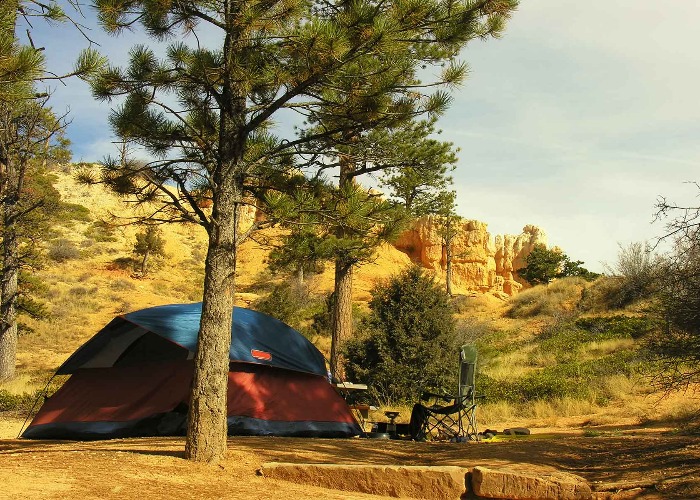
Plan a spot of national park camping for an all-American adventure in the great outdoors
Exploring one of America's brilliant national parks is a great way to see the country. And we've got the lowdown on 10 ridiculously beautiful campgrounds for travellers keen to connect with nature.
1. Cedar Pass Campground, Badlands National Park, South Dakota
Love a weird and wonderful rock formation? Badlands National Park puts the Grand Canyon to shame and a brilliant base for campers is the Cedar Pass Campground, which is especially popular with stargazers and budding geologists. There’s hardly any artificial light here and a jagged sandstone ridge towers over the campsite.
One of America’s most spectacular national parks, Badlands has one of the world’s richest fossil beds and towering wind-sculpted canyons and peaks formed 75 million years ago. There’s plenty of wildlife to spot here too – our favourite species include American bison, black-footed ferrets and pronghorn sheep. Keep your eye out for fossils – in 2010 a park visitor (literally) stumbled across the fossilised skull of a sabre-tooth cat.
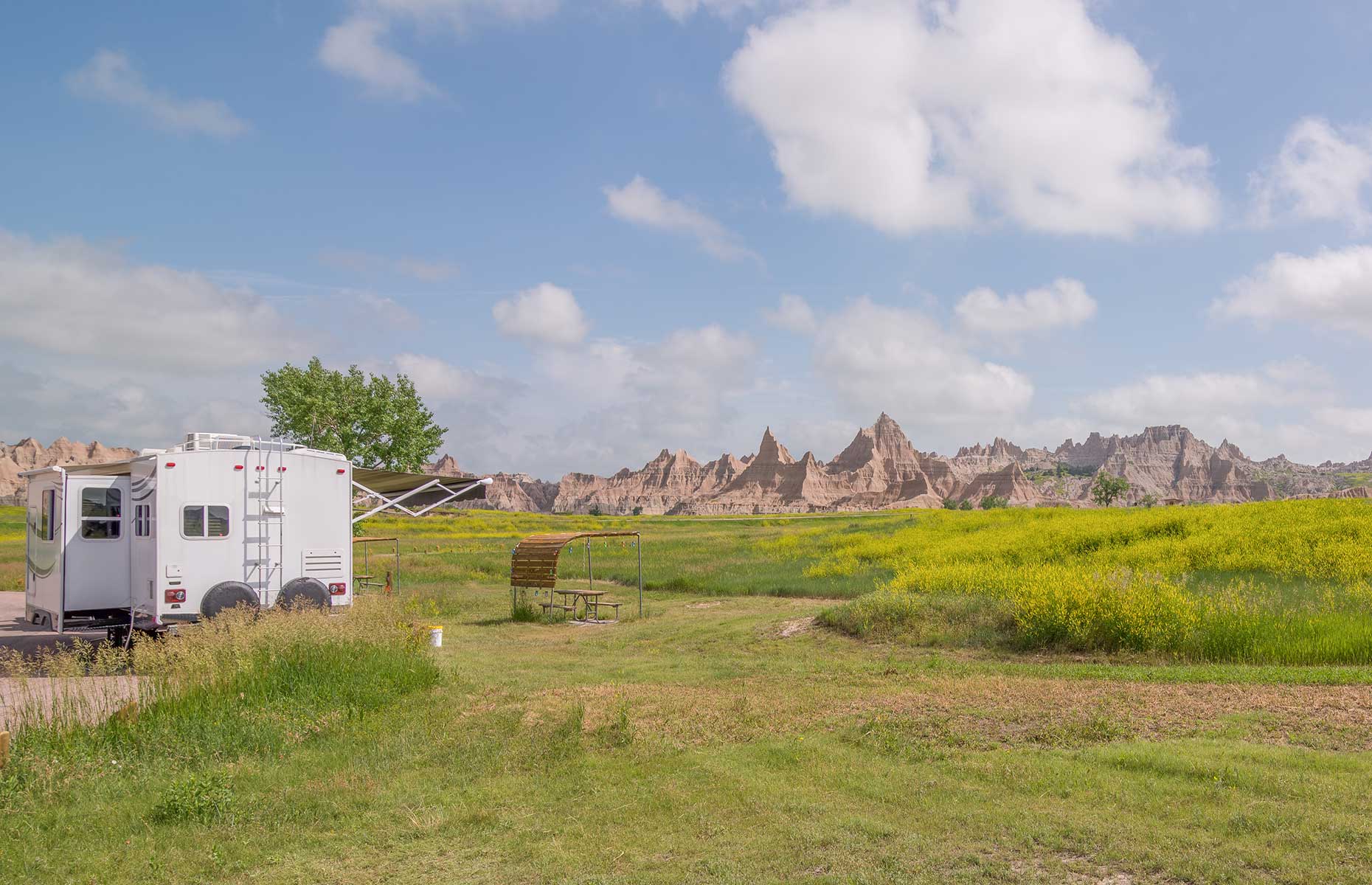 natmac stock/Shutterstock
natmac stock/Shutterstock
2. Devil’s Garden Campground, Arches National Park, Utah
Famous for the diversity of its rock formations, Arches National Park is an area formed 65 million years ago, when it was a vast, dry seabed – the red rock formations which it’s now famous for were buried deep underground. Geological forces then squeezed the entire area, pushing up these previously buried formations while creating fractures which eventually became canyons.
READ MORE: America's most stunning natural wonders
One of our favourite spots in Arches National Park is the Devil’s Garden area, where you’ll find the widest range of rock formations, from cavernous arches to hoodoos (tall, knobbly spires of rock). The best bit? This is also the location of the Devils Garden Campground. The site’s high altitude – you’ll be pitching your tent at 5,200 foot (1,500m) above sea level – is the reason it’s another fantastic campsite for stargazers.
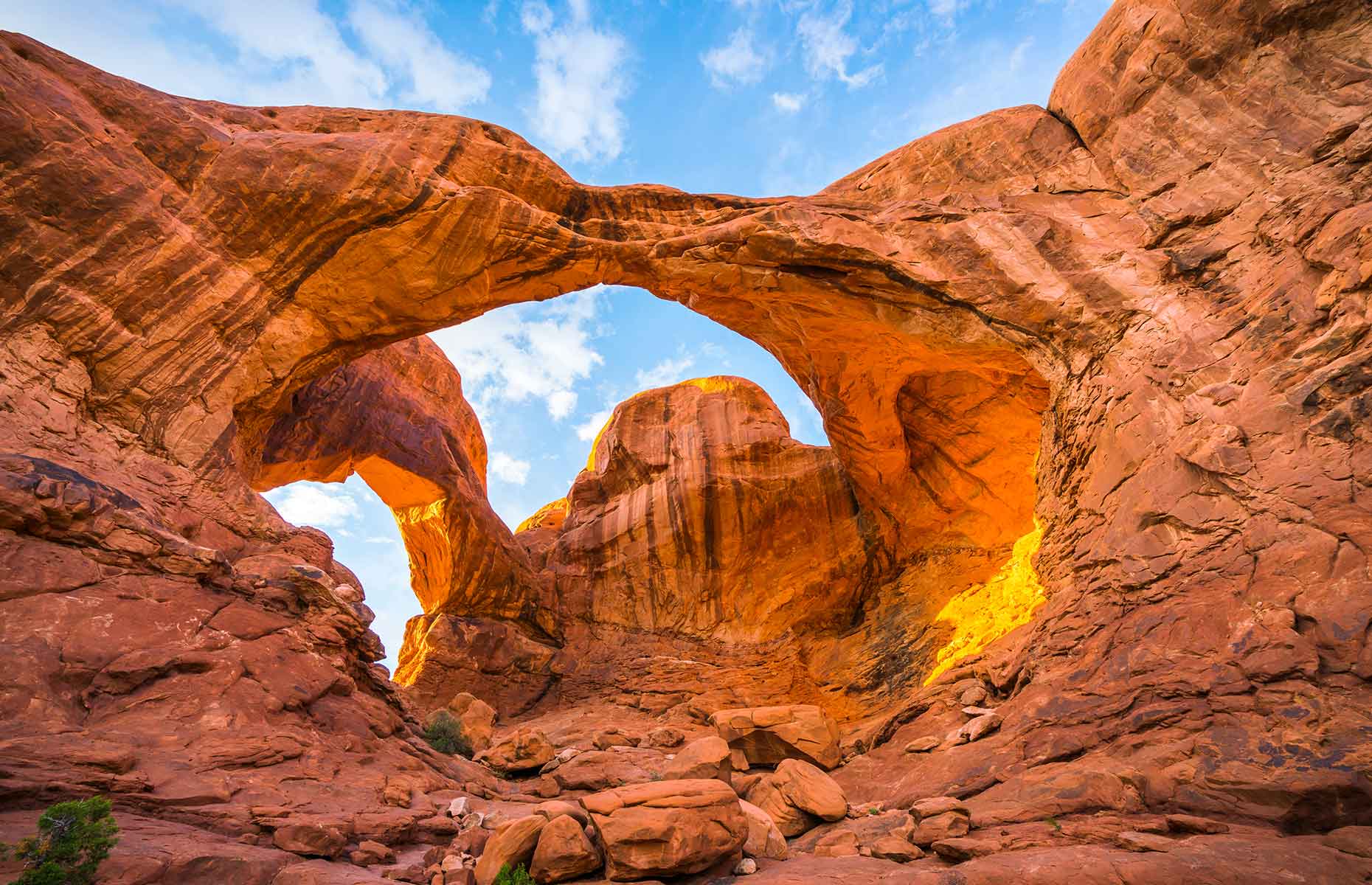 Checubus/Shutterstock
Checubus/Shutterstock
3. Sunset Campground, Bryce Canyon National Park, Utah
Bryce Canyon’s name is deceptive – it’s not actually a single canyon but a series of natural amphitheatres, carved into the edge of a high-altitude plateau. It’s a beautiful park which is relatively easy to explore, thanks partly to its size, which comes in at 36,000 acres (to put that into perspective, Yellowstone covers over one million). It’s also a great option for anyone keen to combine a visit to Bryce with some of Utah’s other parks, such as Zion National Park, which is a 90-minute drive away.
Pitch up at Sunset Campground (see main image) and you’ll have the ideal base – you’ll be just a short walk from a visitor centre as well as Sunset Point, one of Bryce Canyon’s best viewpoints. Landmarks to look out for include the Thor's Hammer hoodoo and the Claron Formation – the presence of iron oxide gives the latter its striking red, orange and yellow hue.
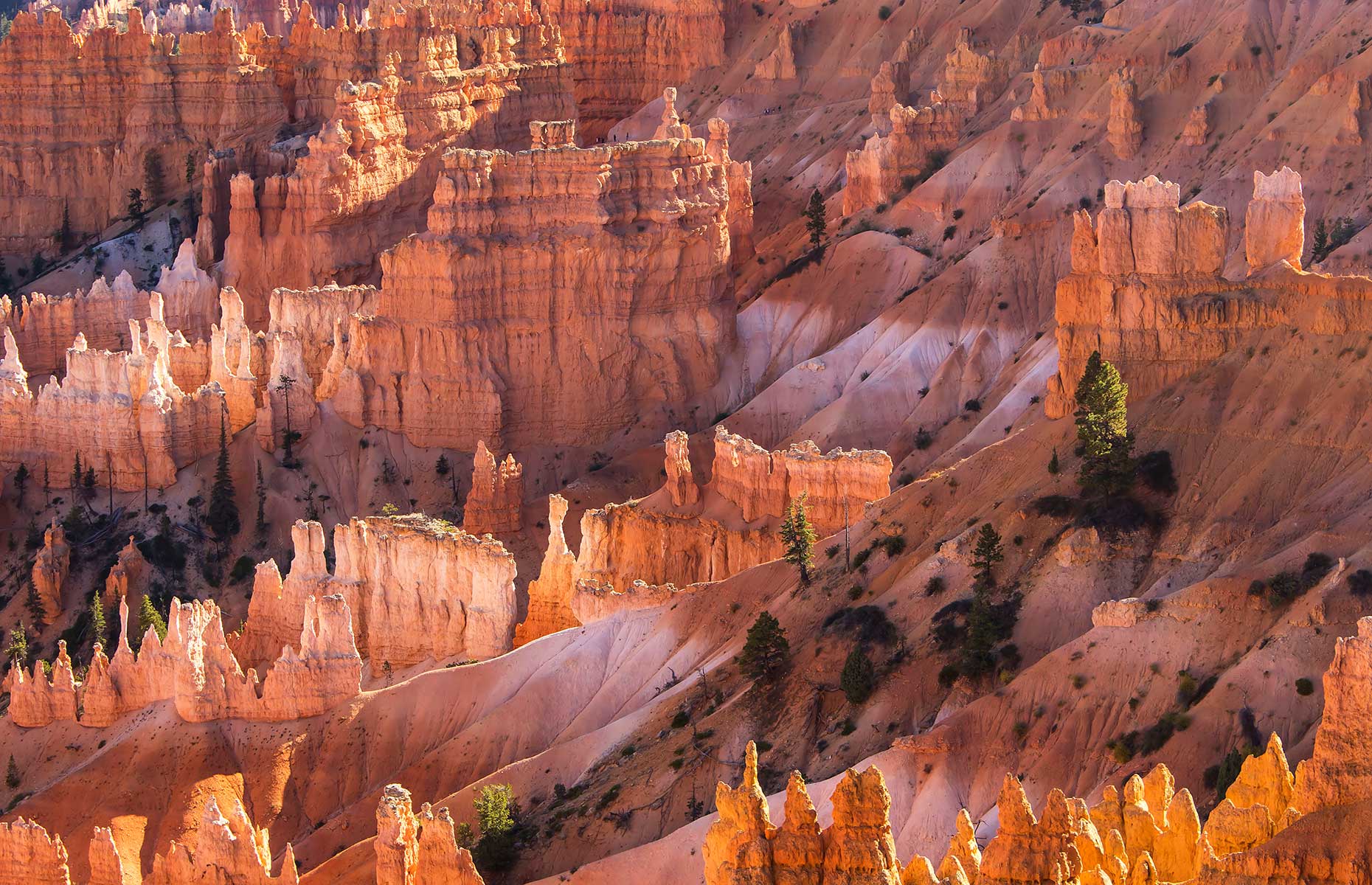 Karel Bock/Shutterstock
Karel Bock/Shutterstock
4. Garden Key Campground, Dry Tortugas National Park, Florida
One of America’s most remote national parks, the Dry Tortugas National Park contains seven small islands and a whole lot of ocean – albeit an area of ocean famous for its coral reefs and marine life. Its most famous landmark is Fort Jefferson, one of America’s largest 19th-century forts, although it was abandoned by the army in 1874 and used as a coaling station for warships, instead.
You’ll find Fort Jefferson on Garden Key, which also has one of Florida’s prettiest campgrounds. Base yourself at the Garden Key Campground and you’ll be just a short walk from the famous fortress, and even closer to one of America’s best snorkelling spots. We recommend heading to the beach next to the fort – the water here is filled with seagrasses which attract a wide range of fish, and you’ll be able to snorkel parallel to the fort’s imposing moat wall.
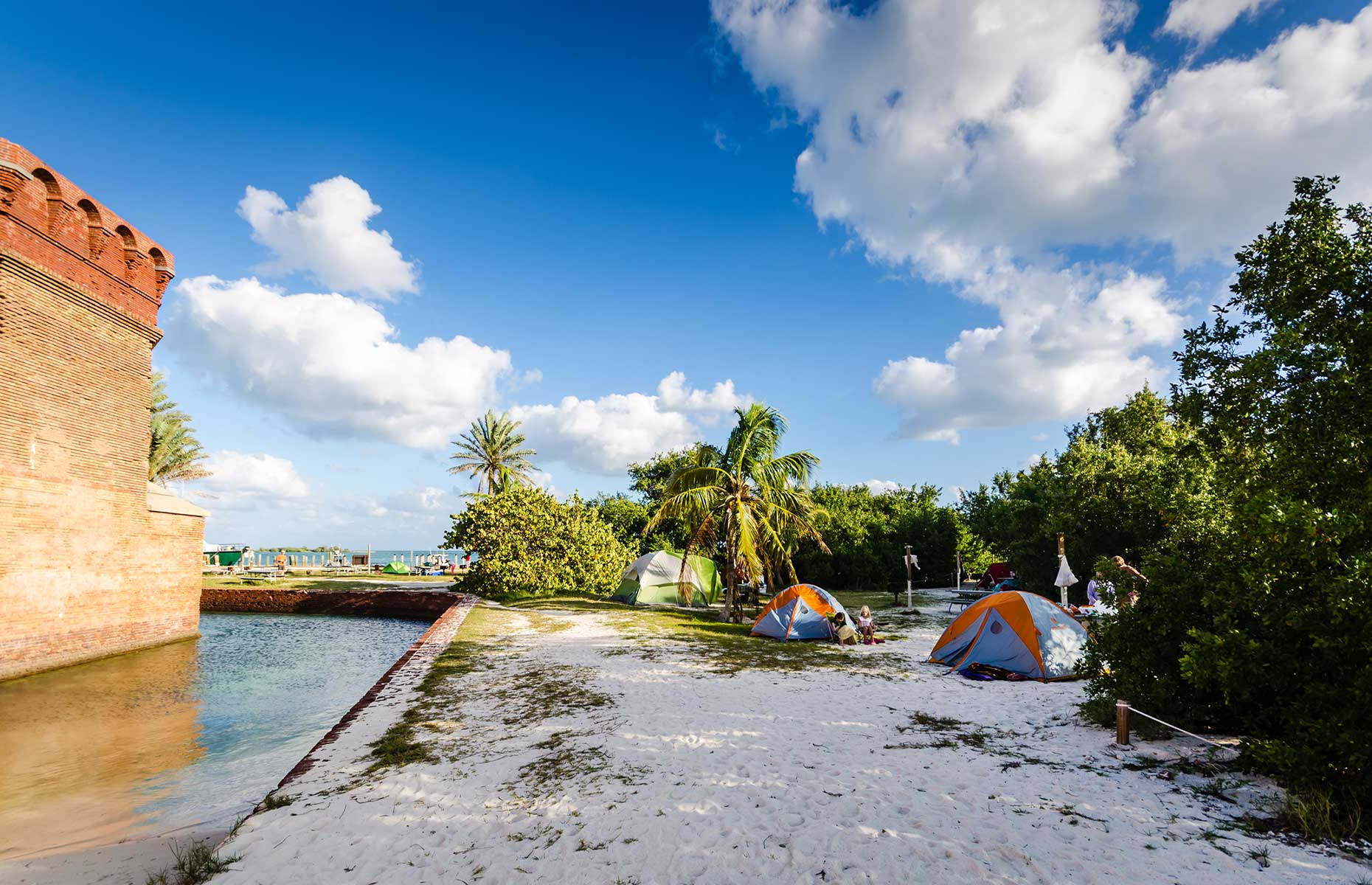 Sandra Foyt/Shutterstock
Sandra Foyt/Shutterstock
Note that the campsite is pretty primitive – so make sure to check what you need to bring and be prepared to get back to basics.
5. ROAM Beyond Campsite, Olympic National Park, Washington
If hammering in tent pegs sounds like too much hard work, head to Olympic National Park, with its quaint wooden caravans and brilliant sustainability credentials, care of ROAM Beyond. Tucked into a cedar-scented forested corner of the Olympic Peninsula, the campsite feels wonderfully secluded and ridiculously cosy.
Caravans come with private bathrooms, stoves and kitchenettes, and the outdoor areas have firepits and covered cooking areas. It’s a brilliant spot for hikers, who can explore the Hoh Rainforest Trails or wander over to Ruby Beach, one of the park’s top bird-watching spots. Note that the caravans are currently slated to reopen in 2022 but there are other campgrounds and lodges in the park.
READ MORE: New National Scenic Byways to explore
6. North Rim Campground, Grand Canyon National Park, Arizona
Trust us: all other campsites will look rather plain after a visit to this Arizona campground, which you’ll find at 8,200 feet (2,500m) above sea level, surrounded by rustling ponderosa pines. It’s a fantastic option for campers and road trippers (there’s plenty of room for motorhomes here too) who want easy access to some of the best views over the Grand Canyon.
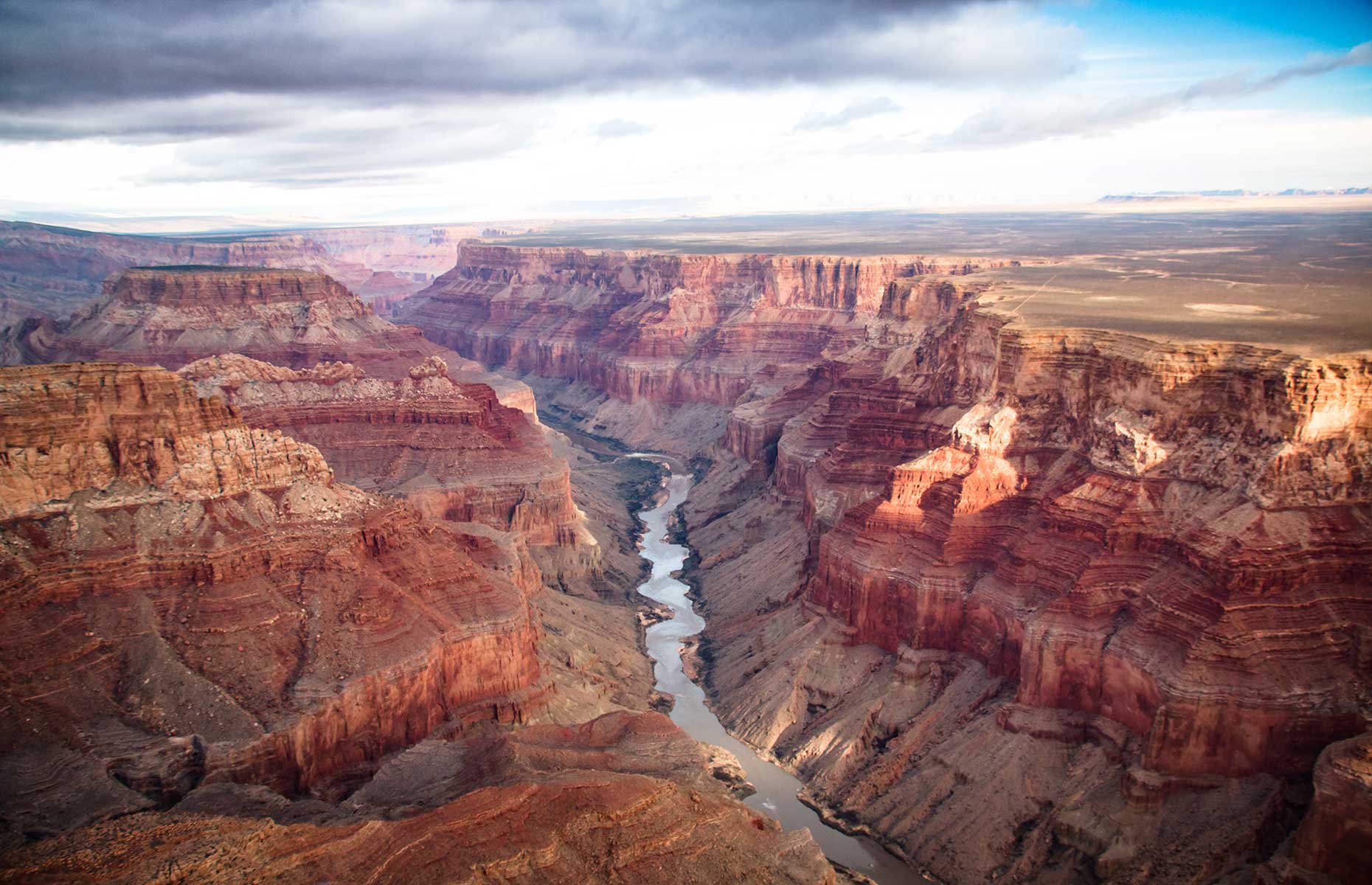 Amanda Mohler/Shutterstock
Amanda Mohler/Shutterstock
It’s also a fantastic option for wildlife fans – get lucky (or unlucky, depending on your stance) and you might just find a bighorn sheep, mule deer, coyote or grey fox gnawing on your guy ropes. The campsite’s just a few metres from the Transept Canyon, a side canyon which is also a great hiking spot, thanks to a well-maintained network of trails. For the best views, try and bag one of the campsite’s following pitches: 23, 24, 25, 26, 29 or 31.
7. Chickee sites, Everglades National Park, Florida
A gorgeous camping spot which comes with a dash of fear factor, the Everglades’ chickee sites are basic wooden platforms on which tents can be erected. You’ll be just a few metres above the water (and yes, inevitably an alligator or two), but for a back-to-basics retreat with a fantastic soundtrack it’s an experience which is hard to beat. Listen out for the high-pitch call of the oak toad, America’s smallest toad species.
 William Eugene Dummitt/Shutterstock
William Eugene Dummitt/Shutterstock
We suggest starting your adventure at the Flamingo Marina, where you can hire a kayak before paddling your way along the Hell's Bay (try not to dwell on the name) canoe trail to the Pearl Bay chickee huts, which have the added bonus of an outhouse-style restroom.
READ MORE: 50 reasons why we love Florida
8. Mazama Campground, Crater Lake National Park, Oregon
This beautiful campsite in Crater Lake National Park, which will also accommodate motorhomes, comprises 214 pitches in an old-growth forest, 6,000 feet (1,800m) above sea level. Facilities at Mazama Campground are basic but include everything you need, and every plot has a picnic table, fire ring and bear-resistant food locker.
It’s only open from June until late September, so book early – its close proximity to nearby Crater Lake means it fills up quickly. The park’s namesake is America’s deepest lake and it formed when Mount Mazama collapsed 7,000 years ago. It’s famous for its bright blue water along with Wizard Island, a volcanic cinder cone which resembles a miniature mountain poking above the waterline.
READ MORE: The most beautiful lake in every state
It can be accessed via the shuttle service which departs from the Cleetwood Cove Boat Dock on the lake’s north side. The bad news? To reach the dock you’ll have to hike the Cleetwood Cove Trail, one of the park’s steepest routes.
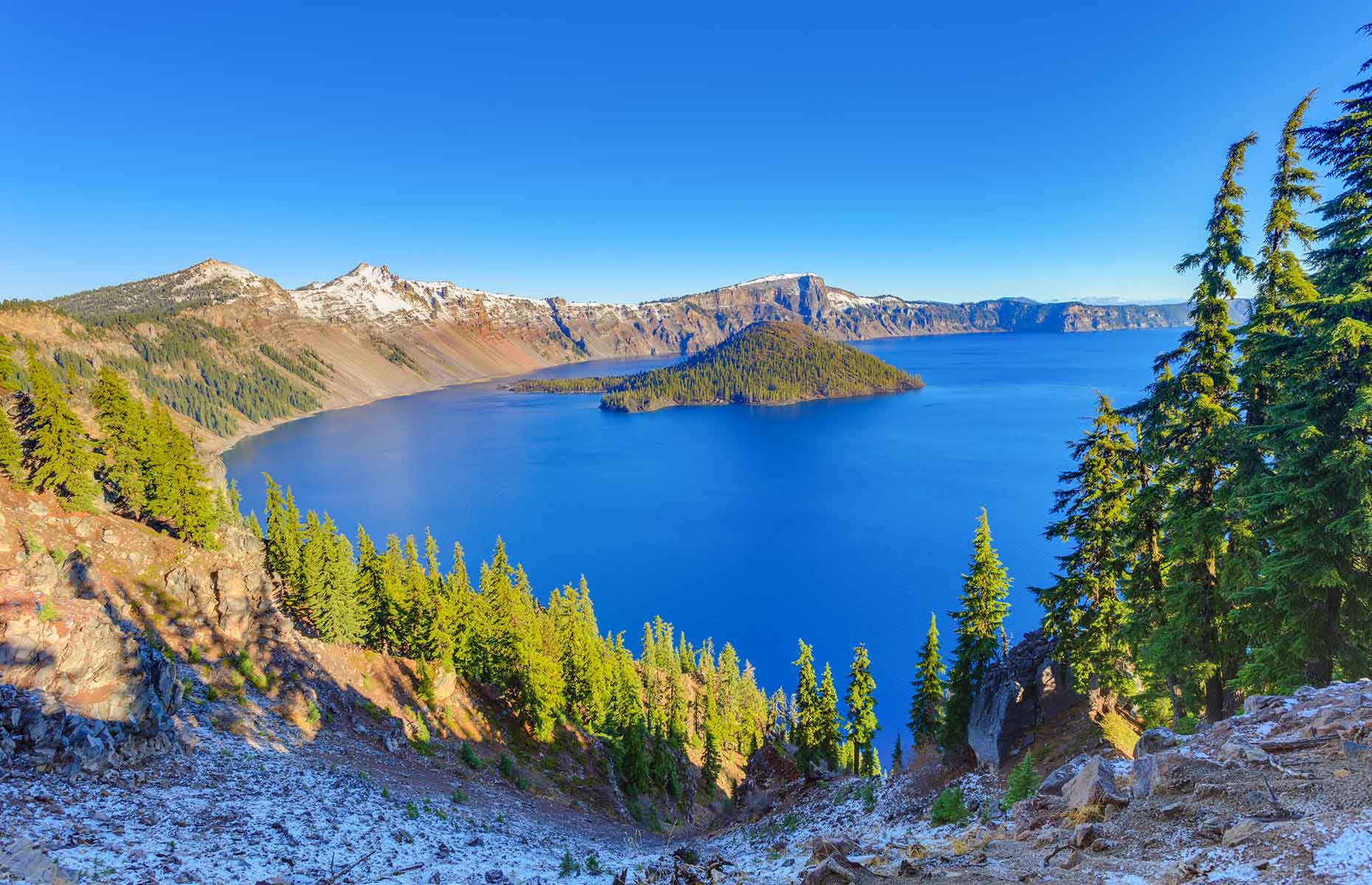 Zhukova Valentyna/Shutterstock
Zhukova Valentyna/Shutterstock
9. Jumbo Rocks Campground, Joshua Tree National Park, California
Why can’t all campsites have cool-sounding names? A stunning campsite in the shadow of some of Joshua Tree National Park’s most weird and wonderful rock formations, Jumbo Rocks has a central location which makes it easy to get to the park’s best bits.
It’s one of the park’s handful of campsites and gets busiest between October and May, when campers flock here to enjoy the warm, dry winters which follow the searingly-hot summer months this part of California is famous for. It’s incredibly popular with families – kids can burn off energy by scrambling over the huge nearby boulders. In addition to the tougher hiking trails which can be accessed from the site, there’s a shorter kid-friendly interpretive nature trail too.
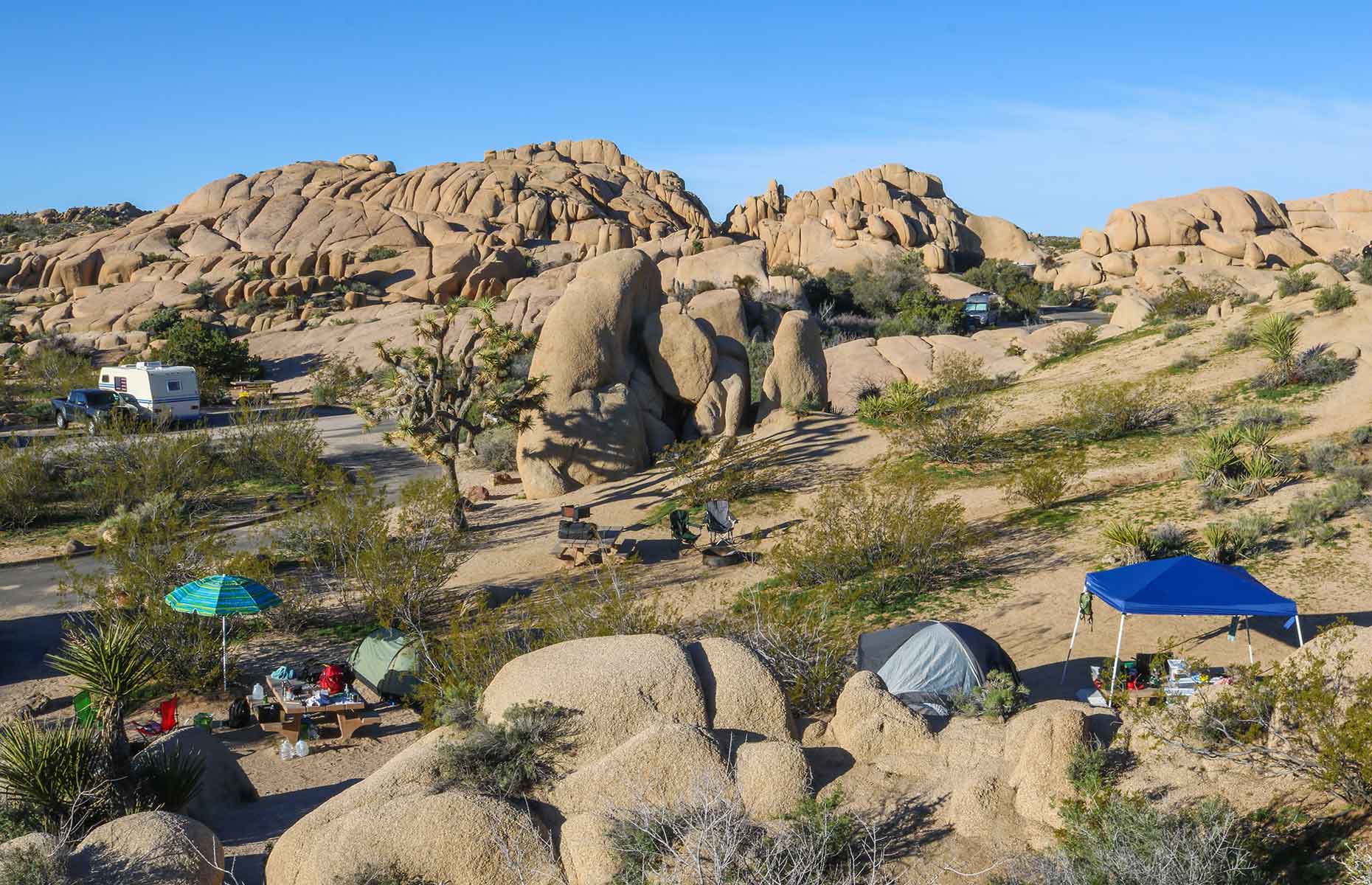 Bram Reusen/Shutterstock
Bram Reusen/Shutterstock
10. Moraine Park Campground, Rocky Mountain National Park, Colorado
For the best views over the jagged peaks Rocky Mountain National Park is famous for, bed down at this campsite on the park’s north side. Gaze at the sky-scraping peaks which reach up to 14,000 feet (4,300m). This particular corner of the park is also known for its fauna and flora, with thick clusters of lodgepole pines, ponderosa pine and Engelmann spruces, and wildflower meadows popular with mule deer, Rocky Mountain elk and coyotes.
READ MORE: The most unique place to camp in your state
The campsite, which has pitches for motorhomes as well as tents, is perfect for campers. Top tip: make sure you check out the nearby Beaver Meadows Visitor Center, a beautiful mid-century modern-style building designed by Taliesin Associated Architects, which was founded by Frank Lloyd Wright.
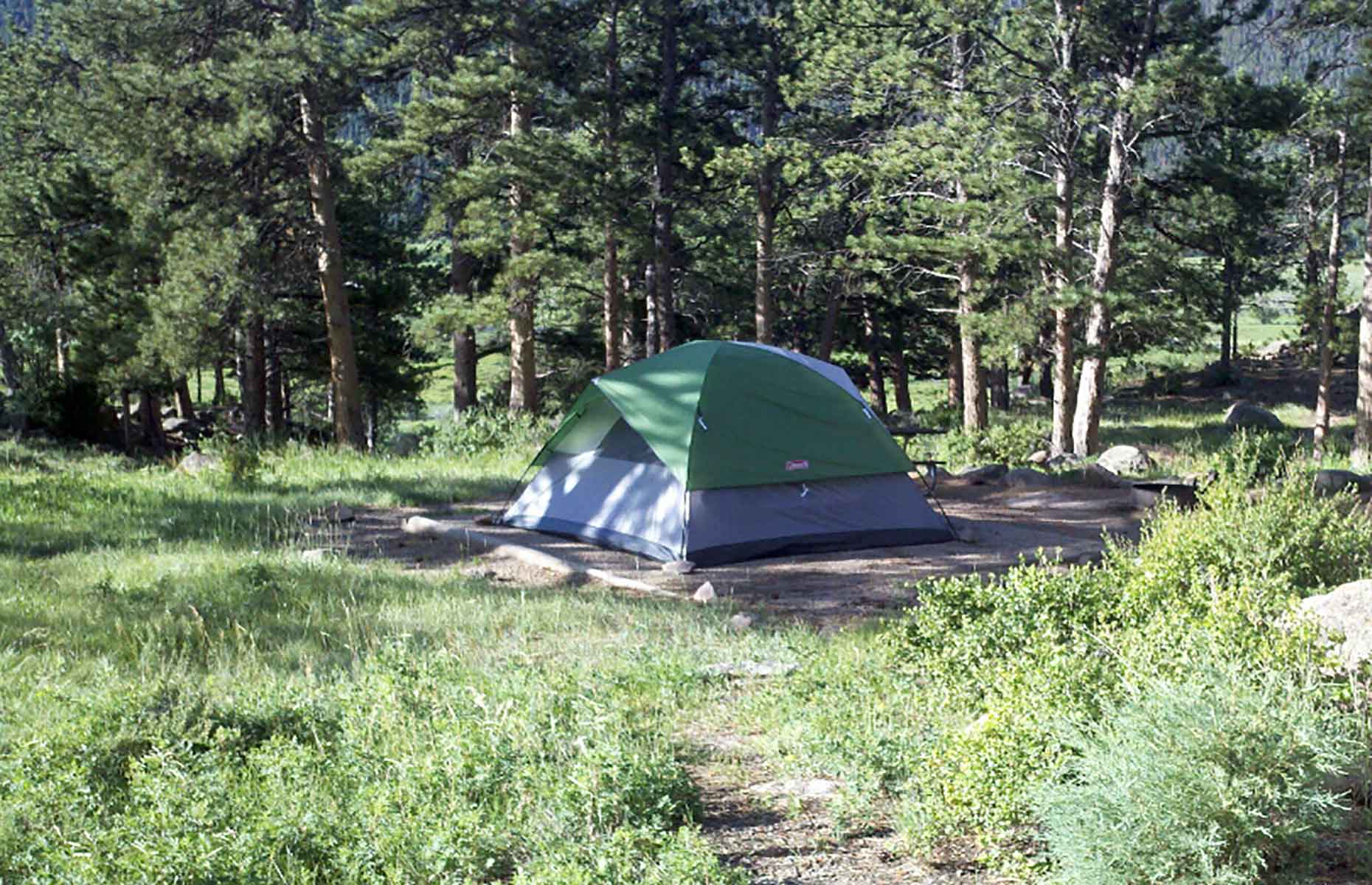 Jasperdo/Flickr/CC BY-NC-ND 2.0
Jasperdo/Flickr/CC BY-NC-ND 2.0
Lead image: Don Mammoser/Shutterstock
Comments
Be the first to comment
Do you want to comment on this article? You need to be signed in for this feature